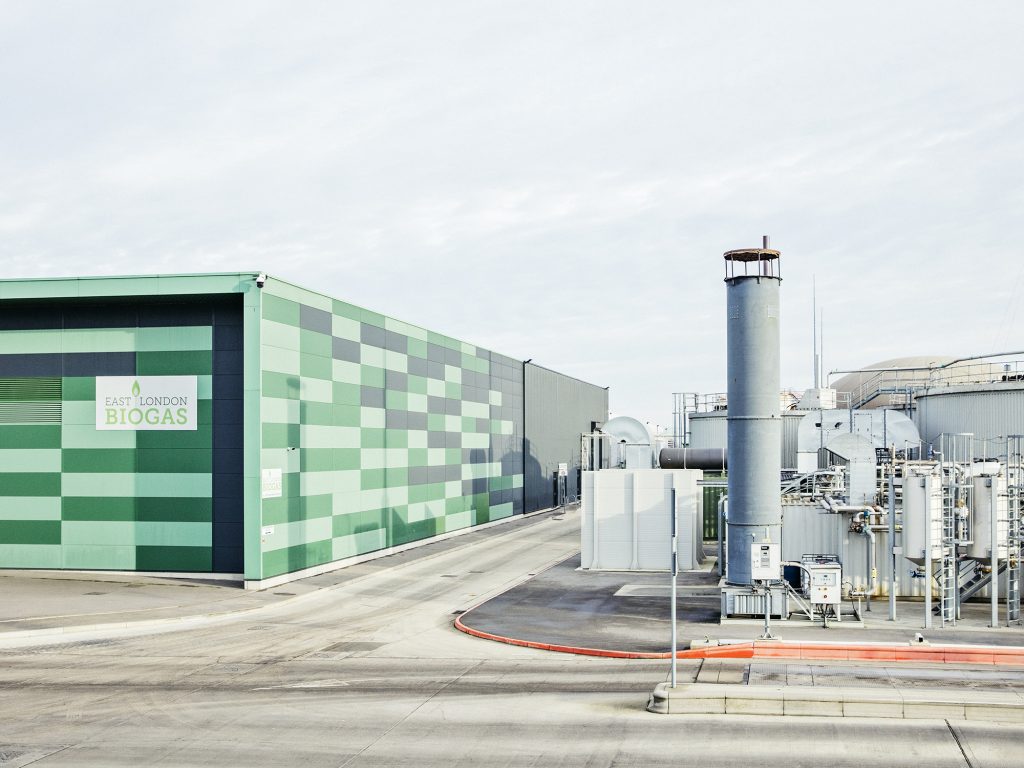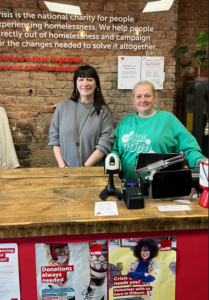East London renewable energy plant turns festive food waste into green power

With the festive season now behind us, councils around the country are counting the cost of our culinary excesses – millions of mince pies, brussels sprouts, uneaten turkeys and Christmas puddings that end up on the scrap heap. But at least in Dagenham, a substantial proportion of that food waste has been collected and will be turned into sustainable electricity.
The East London Biogas anaerobic digestion (AD) plant in Dagenham, part of Bio Capital Group, has the capacity to generate 31 GWh of green electricity annually which it feeds directly into the grid to power local homes and businesses.
The plant’s feedstock is derived from both commercial sources and households. The biomatter is fed into giant anaerobic digestion AD silos where it is broken down in an oxygen-free atmosphere to produce a high performing, low carbon biogas. The plant’s owners, Bio Capital, say it has the capacity to produce enough renewable energy to power 10,000 homes annually.
A further benefit of the East London Biogas AD process is the high-quality bio-fertiliser that is a by-product, which is used by farmers in Kent, Hertfordshire, Cambridgeshire, Suffolk and beyond to improve soil health and significantly increase yields – thereby preparing the land for next year’s sprouts. As such, the plant is a model for the circular economy, coupling agriculture with recycling and decentralised green energy production.
The UK produces around 9.5M tonnes of food waste each year (equivalent to 25M tonnes (CO2e) of the powerful greenhouse gas methane). Bio Capital is actively looking to partner with food producers, local councils and large farms to transform food waste, garden waste and agricultural crop residues into renewable energy.
Peter Sharpe, CEO of Bio Capital said:
“Biogas is an increasingly important part of the energy mix in the UK as we move away from our reliance on fossil fuels. Biogas embodies the circular economic model, providing a secure, local, low carbon alternative to natural gas, reducing waste and carbon emissions, and providing a high quality, organic alternative to chemical fertilisers. By using food waste generated in the local area, we are helping deliver greater energy independence, security and reducing need for gas imports – particularly critical in an environment of high energy prices and rising cost of living.”
Biomethane has a vital role to play in the UK’s future energy mix. It is a 100% renewable, low carbon alternative to natural gas or LNG that is bolstering the UK’s energy needs as global energy costs rise. While it releases some CO2 when burned (still far less than fossil fuels), it is technically carbon-neutral because the harmful methane emissions that would otherwise be released into the atmosphere when the food rots in landfill is captured and used as an energy source.
As the global gas crisis continues and energy costs remain high, the case for increasing the UK’s biogas capability has never been stronger. Bio Capital is committed to expanding its operations in East London and across the United Kingdom.
About Bio Capital:
Bio Capital is the UK’s largest energy from biogas producer by megawatt (MW) and a trailblazer for the circular economy, coupling food waste recycling with local green energy production for homes, vehicles and agriculture. Formed in 2018 by Equitix and Helios Energy Investments, it owns and operates a portfolio of anaerobic digestion (AD) plants across the UK and Ireland. Bio Capital invests in both operational and greenfield assets, including gas-to-grid and electricity generation facilities that utilise food-waste and agri-feedstock fuel sources.
Bio Capital’s impact in 2021:
– produced 156k MWh of consistent renewable energy to the grid equivalent powering a city the size of Bath.
– converted 400k tonnes of food waste into low-carbon energy for homes and vehicles and bio-fertiliser.
– Captured over 233k tonnes (CO2e) of GHG methane that would have been emitted from food waste in landfill.




